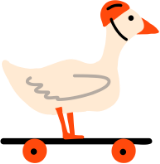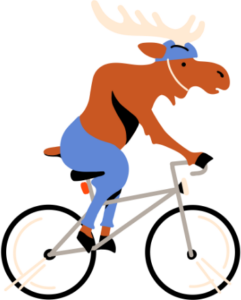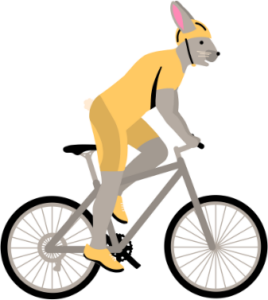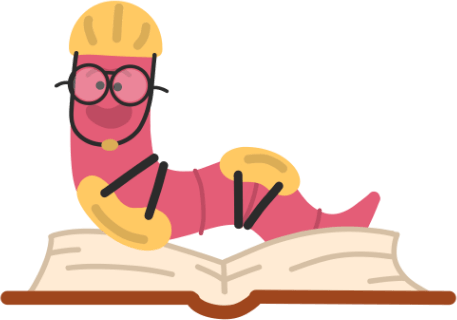It’s wild out there.
Anything can happen when you’re on the road.1
A traffic safety resource from the Spokane County Target Zero Task Force.







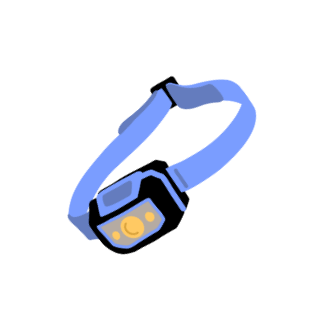
No matter how you get around, look out for others on the go.2
We all use the road: walkers, runners, rollers, cyclists, drivers.3 And everyone deserves to get to their destination safely.






Most of us know when we have the right of way.
But, recently, crashes that seriously injure or kill pedestrians and bicyclists have been on the rise.


Pedestrians and bicyclists are more vulnerable roadway users, and without big metal cages around them like cars, trucks and buses, they are more likely to be injured in a collision.



With more of us than ever on the road, it’s up to all of us to help keep travelers of all types safe.

Sharing (the road) is caring.4
These small steps can make sharing the road safer for everybody. Scroll through the tips below and keep them in mind the next time you’re out and about.

Communicate.
Wave, use hand signals and make eye contact with other people on the road to communicate your intentions.5
See and Be Seen.
Pedestrians and bicyclists—wear bright colors and reflective gear to make yourself more visible to drivers.6
Drivers—keep your eyes peeled for folks on bike or foot.


Stay Alert.
Eliminate distractions before you hit the road. Avoid using earbuds or your phone when you’re driving, biking or walking.7

It’s not just you out there. Safety is a team effort.
When you play your part to stay safe and keep others safe, you minimize the risk that you or someone else will get hurt. Here’s what to know if you’re a driver, bicyclist or pedestrian.
Pedestrians
Be alert. Be seen. Be predictable.


I’m a pedestrian, tell me more!

1. Be predictable.
- Use safety features like marked crosswalks and signals when possible. Any corner is a legal crossing, marked or unmarked. [RCW 46.61.235]
- Be extra cautious at unmarked crosswalks.
- Avoid crossing mid-block, where drivers are not expecting you.
- Make sure oncoming vehicles have stopped before stepping into the road to cross.

2. Be seen.
Make yourself visible.
- Wear bright or reflective clothing and gear, especially if you’re walking or running at night.
- Wave, raise your hand or make eye contact with drivers to communicate with them. Be sure they see you.

3. Be alert.
Avoid distractions, and be aware of your surroundings.
- Avoid using your phone, earbuds or headphones while walking, especially when crossing the street. If you’re listening to something, make sure you can still hear what’s going on around you. Turn down the volume or only use one earbud.
- Don’t assume all drivers are paying attention.

4. Be informed.
Cyclists
If you ride on the road, be a vehicle. If you ride on the sidewalk, be a pedestrian.


I’m a cyclist, please go on!

1. Be predictable.
Make it easy for drivers to know what you’ll do next.
- Let folks know where you’re going. Use proper hand signals to tell them you’re going left or right or stopping.
Know and stick to your role on the road. [RCW 46.61.755]
- If you ride in the bike lane, on the shoulder or in the lane of traffic, obey the rules of the road for cars and vehicles, or the laws specific to bikes.
- If you ride on the sidewalk, follow the rules and responsibilities of a pedestrian.

2. Be visible.
- When riding at night, you must have a front-facing, white light and a red rear reflector. [RCW 46.61.780]
- Wear bright, reflective clothing and gear.

3. Be safe.
- Wear a properly fitted helmet. Your local bike shop can help you find the right one and make sure it fits correctly.
- Avoid wearing earbuds or using your phone while cycling.

4. Be informed.
Drivers
You’re the biggest and the fastest, so be the safest, too. Look out for the little guys on foot or bike.

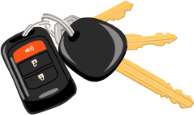
I’m a driver, do continue!

1. Stay aware.
- “Zoom out” and take in the bigger picture of the road. Scan the road ahead and check your mirrors every 5 to 8 seconds. It will help keep you and everyone safer.
- Before you get going, eliminate distractions that might get in the way of your safety or someone else’s – such as putting your phone in driving mode or out of reach in the glove box.
- Look for hand signals from pedestrians and bicyclists. Make eye contact so others know you see them and can move, change lanes or cross safely.

2. Always stop to let people cross the road.
- Any corner is a legal crossing, even if there isn’t a marked crosswalk. [RCW 46.61.235]
- Before you turn, look around and wait for any people crossing.
- Give people crossing plenty of time and space. Wait to turn in front of or behind them until they are at least one lane away from the lane you’re in or turning into.
- Stop if other vehicles are also stopped at a crossing. There may be people on the road you can’t see.

3. Drive the speed limit.
- It’s safer for everyone.
- Pedestrians and bicyclists who are hit at higher speeds are more likely to suffer serious or fatal injuries.

4. Slow down and give plenty of space when passing cyclists.
- Leave at least 3 feet between your vehicle and the bicycle. The more room, the better. If there are two or more lanes going in the same direction, move over into the next lane to give bicyclists enough room when passing.
- Provide plenty of space before merging back in front of a bicyclist. If there’s not enough room to pass, be patient. Wait until it’s safe.

5. Be informed.
Know how to play well with others on the road.
- Bicyclists can treat stop signs like yield signs. They do not have to come to a complete stop at stop signs if no other vehicles are present.
- Bicyclists may go straight even in a right turn-only lane. Look for their hand signals to know where they plan to go.
- Bicyclists going slower than traffic should ride as far to the right as is safe, but they can move into the left lane to turn left. Look for their hand signals to know which way they plan to go.
- Any corner is a legal crossing, even if it isn’t a marked crosswalk.
We’d like to hear from you!
Take our 3-minute survey to help us gain a better understanding of the community’s knowledge of pedestrian and cyclist safety.



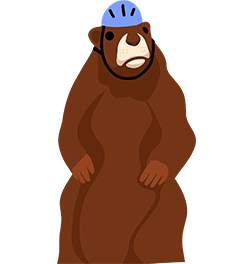









Want to learn more?
If you want to know more, or read something again, use the links below to jump to other sections in this site.
Community Survey
Take the survey
Pedestrians
Return to
this section
Cyclists
Return to
this section
Drivers
Return to
this section
